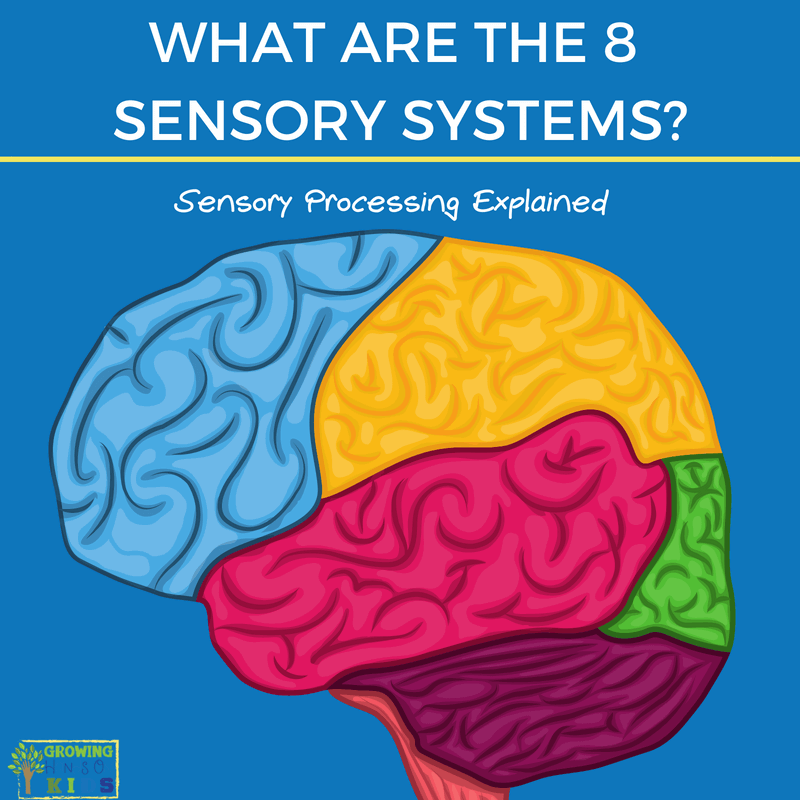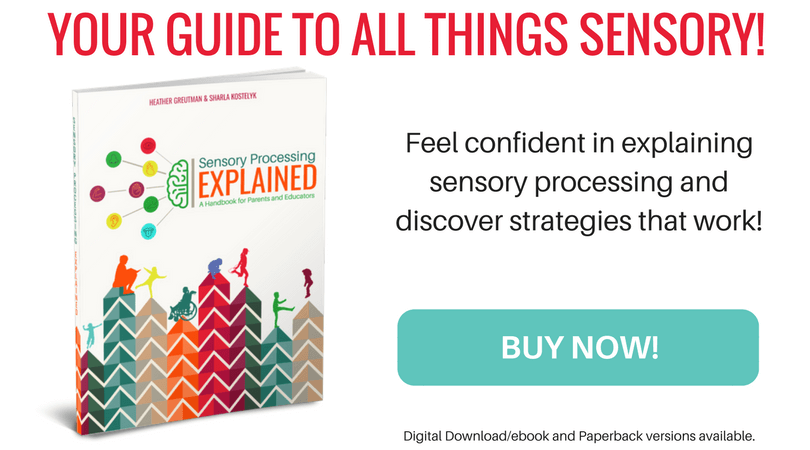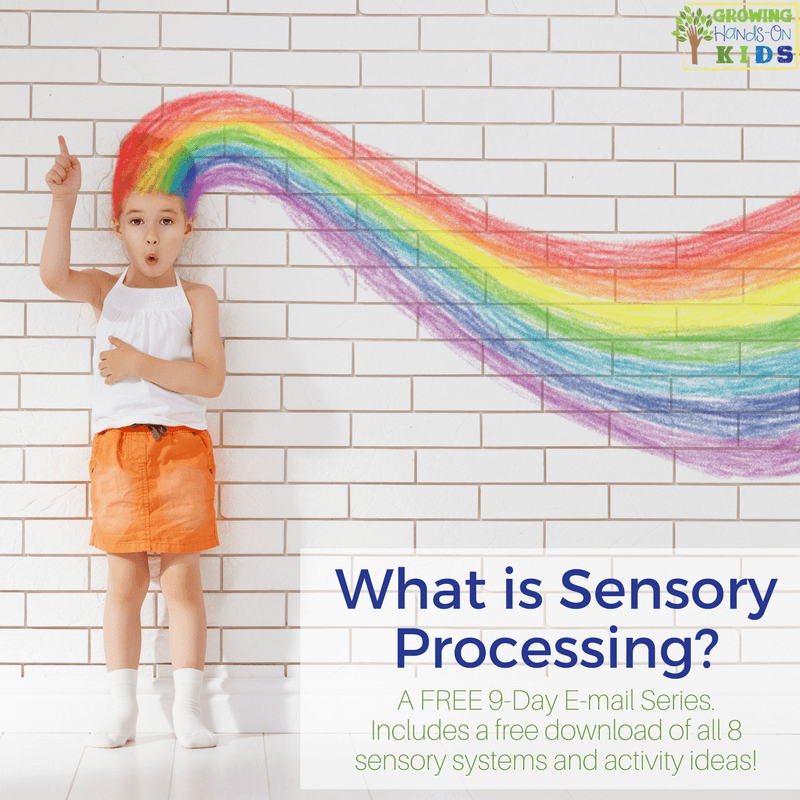From Touch to Interoception: What Are the 8 Senses?
Affiliate and Referral links are used below to promote products I love and recommend. I receive a commission on any purchases made through these links. Please see my disclosure policy for more details. As an Amazon Associate, I earn from qualifying purchases.
We’ve all grown up learning about the “five senses”: sight, sound, taste, touch, and smell. But did you know there are actually eight senses that play a role in how we experience and respond to the world around us? These additional senses are vital for child development, self-regulation, and everyday functioning, yet many people don’t hear about them until they start exploring sensory processing in more depth.
The Sensory Processing System
As someone who is fascinated by the brain and how the sensory system works, I’m always learning something new. Every continuing education course I attend reminds me just how complex and important these sensory systems are. That’s why I want to share this overview with you today, so you can better understand the eight senses and how they affect learning, behavior, and daily life.
At its core, the sensory system is the brain and body’s way of taking in, organizing, and responding to information. When all the systems are working well, we achieve an “optimal level of arousal”—the balanced state that helps us focus, learn, and engage with the world.
But when sensory input feels overwhelming or underwhelming, it can lead to what’s often called sensory processing difficulties. You will also see sensory processing challenges along with another diagnosis, such as Autism Spectrum Disorder.
So, what are the 8 senses, and why are they so important? Let’s take a closer look.
What Are the 8 Senses?
1. Tactile/Touch
This is often the most commonly recognized sensory system of the body and the one most people notice if they have an overactive or underactive tactile system. Anything you touch or feel is part of the tactile sensory system.
2. Auditory/Hearing
This includes hearing, listening, and being able to filter and selectively attend to auditory stimuli.
3. Visual/Sight
Using our eyes to see what is far or close to us. A typical person is able to use smooth and precise eye movements to scan and visually assess their environment.
4 & 5. Taste/Smell
I put these two together because they are often very closely related. When we eat, we smell something first. If it smells good, we are more likely to try it. If it smells bad, that sends a warning that we may not like it, OR that it is dangerous for us to eat. Smell travels directly to the emotional brain or the limbic system, which is often why our emotions are tied to smells and foods.
6. Proprioception
This is one of the internal senses of the body that comes from the joints, muscles, ligaments, and other connective tissue. The proprioception system allows you to know where your body parts are and what they are doing without necessarily looking at them.
7. Vestibular System
The vestibular system is located in the inner ear and helps you detect changes with regard to gravity. Are you sitting, standing, lying down, upside down, spinning, standing still, etc? It is often referred to as the internal GPS system of your body.
It is also very closely linked to the proprioception, auditory, and visual senses of the body. So that is why when a person or child has sensory processing challenges, the Occupational Therapist will often start with addressing any issues they have with their vestibular system. (more on the Vestibular System and how it affects behavior).
8. Interoception
This is the one that I honestly had no clue about, but made complete sense (pun intended, haha) when I heard about it. This sense is all about the physiological condition of your body. Are you hungry, thirsty? Do you need to use the bathroom? Is your heart racing or at a normal pace?
So when one or more of these systems are not functioning properly, you can see how it would affect that person. Someone who is able to “self-modulate” would be able to handle most sensory input and react to it appropriately. However, if someone is over or under-responsive to sensory input in ANY of these sensory systems, that is often when sensory processing challenges and difficulties are noticeable.
Now, does that mean that just because you are extra sensitive in one or more of these senses that you have a sensory processing disorder? Absolutely not! We all have different things with each sense that we can tolerate and not tolerate. It's about how you deal with those differences. If a sensory difference or challenge is adversely affecting your daily life or routine, that is often when seeking outside therapies and strategies is helpful.
Get a Free Handout of the 8 Sensory Systems
To get your free download, enter your email address in the form below. Then head to your inbox to download the free printable.
If you are new to GHOK, you'll also start receiving my weekly child development tip emails. You can unsubscribe at any time.
If you are a returning subscriber, you won't be subscribed twice. Entering your email address below lets my email provider know which printable to send you. Also, thanks for coming back!
Sensory Processing Explained: A Handbook for Parents & Educators Available Now!
Finding detailed sensory processing information can lead you to multiple books, websites, and articles. In Sensory Processing Explained, our goal was to combine all of these resources into one, easy-to-navigate handbook.
You’ll gain the tools you need to help your child or student navigate their senses. You will also find strategies and activities that will benefit all children.
Sensory Processing Explained was written by an Occupational Therapy Assistant and mom of seven children. They use their unique experiences as a parent of children with sensory processing disorder and working in the classroom setting with children of various sensory processing challenges.
This book is three books in one, so you will get exactly what sensory processing information is right for your situation. It was written with easy-to-understand terms and language so that you can feel confident in explaining your child or student’s sensory processing struggles with parents, family, friends, or co-workers.
You May Also Like:

Heather Greutman, COTA
Heather Greutman is a Certified Occupational Therapy Assistant with experience in school-based OT services for preschool through high school. She uses her background to share child development tips, tools, and strategies for parents, educators, and therapists. She is the author of many ebooks including The Basics of Fine Motor Skills, and Basics of Pre-Writing Skills, and co-author of Sensory Processing Explained: A Handbook for Parents and Educators.




There is also an intuitive sense that we have when interacting with people and there are a lot of common phrases that refer to this: “We have good chemistry” or “I was on the same wavelength as that person” or “He left a bad taste in my mouth”. How do you explain the idea where you can make an instant judgment about someone upon meeting as to whether you like, trust, or have an affinity to a person? This is applicable in everyday life but also in the matter of love.
What about the sense of temperature? And sense of pain? Both of these seem to be distinct processing systems.
Those would be a combination of systems, the tactile and interoception systems mainly. Many of them work together for different sensations.
Great post that explains such important information for all parents and educators of special needs kiddos!
Wow, 8 senses total! I never thought of all those ‘extra’ sense, though I guess I’ve been aware of them. The things you learn as a blogger lol. I’m truly glad I came across your post today 🙂
I’ve heard the less common senses mentioned before, but it’s nice to be able to read about them all in one place, and in more depth. Thanks for a great article!
Great – I’ve been looking for info on this! Thanks!
You’re welcome Theresa, glad it was helpful for you!